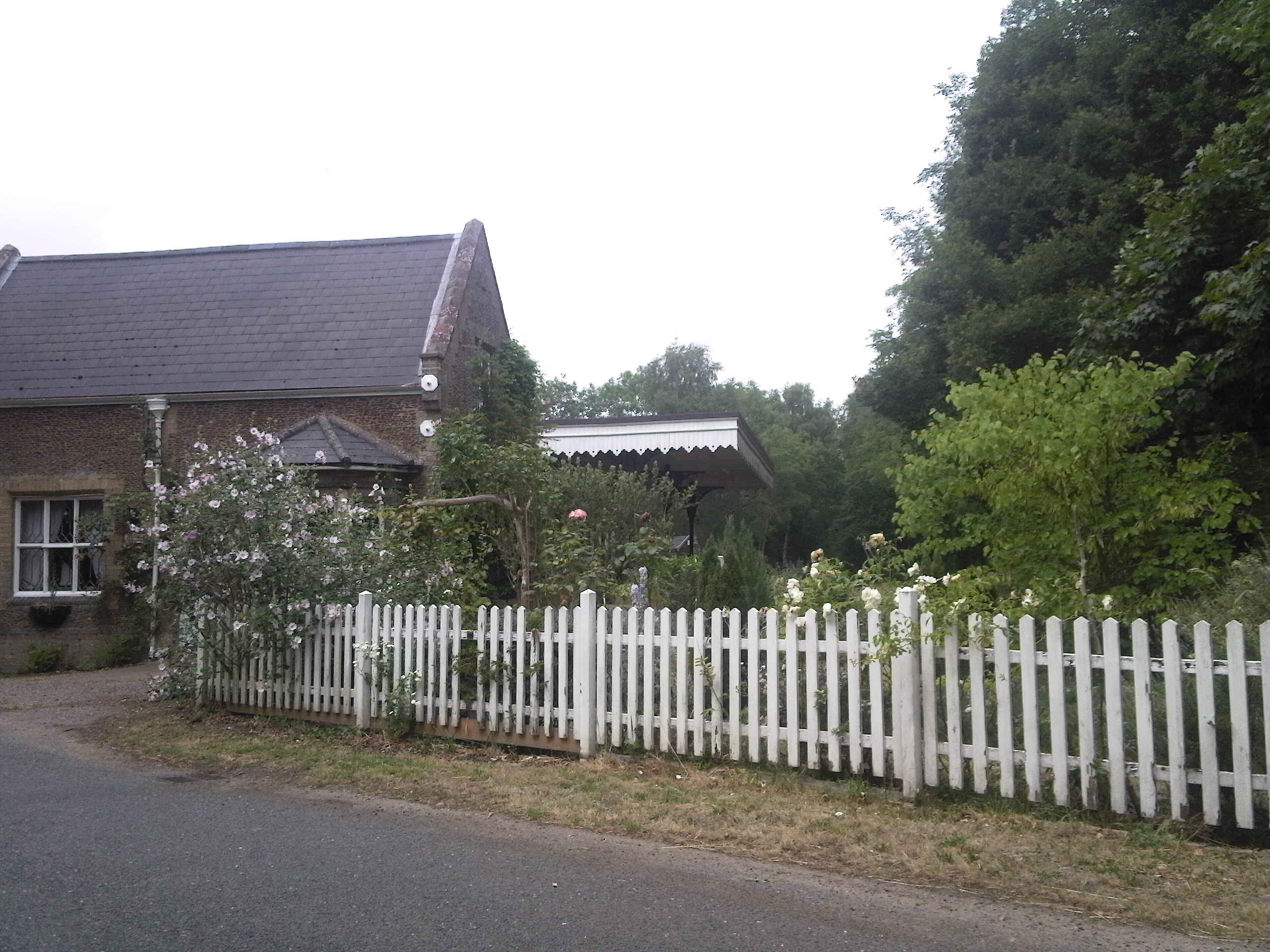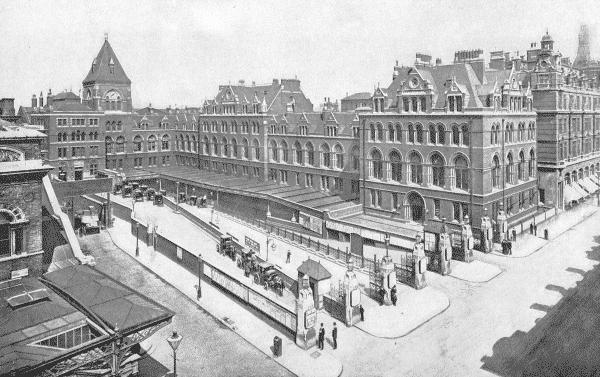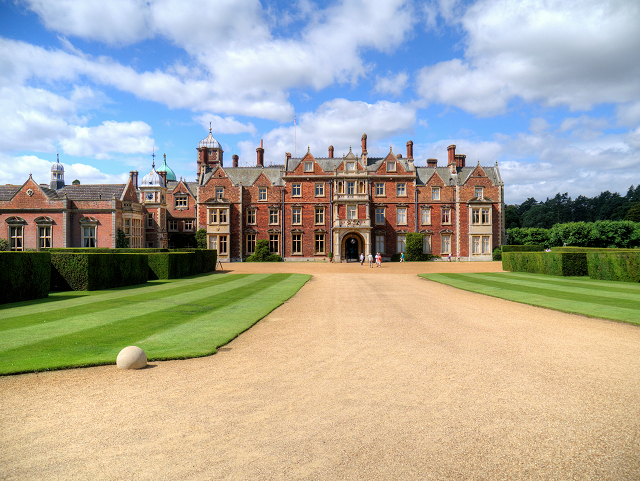|
King's Lynn Railway Station
King's Lynn railway station is the northern terminus of the Fen line in the east of England, serving the town of King's Lynn, Norfolk. It is from and measured from Liverpool Street station, London Liverpool Street. The station and all trains calling here are operated by Thameslink and Great Northern, Great Northern (with service to and from .) It has been the only station in the town since the closure of South Lynn railway station in 1959. Early growth The act of Parliament for the Lynn and Ely Railway, the (8 & 9 Vict. c. lv), received royal assent on 30 June 1845. Work started on the line in 1846 and so the railway arrived at Lynn on 27 October 1846. The original line ran South to Downham with the first station after Lynn being St Germain's railway station, St Germain's. It took another two years to reach Ely. Great Eastern Railway. Lynn, when opened was a joint station (the Lynn and Ely Railway, and Lynn and Dereham Railway). However, on 22 July 1847 the Lynn and E ... [...More Info...] [...Related Items...] OR: [Wikipedia] [Google] [Baidu] |
King's Lynn
King's Lynn, known until 1537 as Bishop's Lynn and colloquially as Lynn, is a port and market town in the borough of King's Lynn and West Norfolk in the county of Norfolk, England. It is north-east of Peterborough, north-north-east of Cambridge and west of Norwich. History Toponymy The etymology of King's Lynn is uncertain. The name ''Lynn'' may signify a body of water near the town – the Welsh word means a lake; but the name is plausibly of Old English, Anglo-Saxon origin, from ''lean'' meaning a Tenure (law), tenure in fee or farm. The 1086 Domesday Book records it as ''Lun'' and ''Lenn'', and ascribes it to the Bishop of Elmham and the Archbishop of Canterbury. The Domesday Book also mentions saltings at Lena (Lynn); an area of partitioned pools may have existed there at the time. The presence of salt, which was relatively rare and expensive in the early medieval period, may have added to the interest of Herbert de Losinga and other prominent Normans in the modest parish ... [...More Info...] [...Related Items...] OR: [Wikipedia] [Google] [Baidu] |
Lynn And Dereham Railway
The Lynn and Dereham Railway was a standard gauge single track railway running between King's Lynn and Dereham in the English county of Norfolk. The Lynn to Dereham line opened in 1846 and closed in 1968, although the section between Middleton Towers and King's Lynn remains open to freight. History The Lynn and Dereham Railway, which weaved a route to East Dereham via Narborough and Swaffham. It was authorised by the ( 8 & 9 Vict. c. cxxvi) which was given royal assent on 21 July 1845, opening in stages between 1846 and 1848; It later became part of the Great Eastern Railway. Only the section of line between King's Lynn and Narborough was opened under the L&DR, on 17 October 1846. The remainder of the line was opened in stages by the L&DR's immediate successor, the East Anglian Railway. The original intention of the company had been to extend their line to Great Yarmouth, via Norwich, but this plan was blocked by the rival Wymondham to Dereham scheme proposed by the N ... [...More Info...] [...Related Items...] OR: [Wikipedia] [Google] [Baidu] |
Liverpool Street Railway Station
Liverpool Street station, also known as London Liverpool Street, is a major London station group, central London railway terminus and connected London Underground station in the north-eastern corner of the City of London, in the Wards of the City of London, ward of Bishopsgate, Bishopsgate Without. It is the terminus of the West Anglia Main Line to Cambridge and Ely; the Great Eastern Main Line to Norwich; commuter trains serving east London and destinations in the East of England, including the Weaver line of the London Overground; and the Stansted Express service to London Stansted Airport, Stansted Airport. The station opened in 1874, as a replacement for Bishopsgate railway station, Bishopsgate station as the Great Eastern Railway's main London terminus. By 1895, it had the most platforms of any London terminal station. During the World War I, First World War, an air raid on the station killed 16 on site, and 146 others in nearby areas. In the build-up to the World War II, ... [...More Info...] [...Related Items...] OR: [Wikipedia] [Google] [Baidu] |
London King's Cross Railway Station
King's Cross railway station, also known as London King's Cross, is a passenger railway terminus in the London Borough of Camden, on the edge of Central London. It is in the London station group, one of the List of busiest railway stations in Great Britain, busiest stations in the United Kingdom and the southern terminus of the East Coast Main Line to Yorkshire and the Humber, North East England and Scotland. Adjacent to King's Cross station is St Pancras railway station, St Pancras International, the London terminus for Eurostar services to continental Europe. Beneath both main line stations is King's Cross St Pancras tube station on the London Underground; combined, they form one of the country's largest and busiest transport hubs. The station was opened in King's Cross, London, King's Cross in 1852 by the Great Northern Railway (Great Britain), Great Northern Railway on the northern edge of Central London to accommodate the East Coast Main Line. It quickly grew to cater to ... [...More Info...] [...Related Items...] OR: [Wikipedia] [Google] [Baidu] |
Royal Train
A royal train is a set of railway carriages dedicated for the use of the king or other members of a royal family. Most monarchies with a railway system employ a set of royal carriages. If the monarch is an emperor the proper term is imperial train. Australia The various government railway operators of Australia have operated a number of royal trains for members of the British royal family, royal family on their numerous royal visits to Australia, tours of the country. Austria-Hungary The imperial and royal court used the ''k.u.k. Hofsalonzug'' (Imperial and Royal Court Saloon Train). Various versions existed under the rule of Emperor Franz Joseph I of Austria. Many of the cars were built by Ringhoffer in Bohemia. The cars were operated and maintained by the Imperial Royal Austrian State Railways. Two cars have survived, one is the dining car kept at the Technical Museum in Prague, and the other is the car of Empress Elisabeth of Austria, which is kept at the Technical Museum ... [...More Info...] [...Related Items...] OR: [Wikipedia] [Google] [Baidu] |
Sandringham House
Sandringham House is a country house in the parish of Sandringham, Norfolk, England. It is one of the royal residences of Charles III, whose grandfather, George VI, and great-grandfather, George V, both died there. The house stands in a estate in the Norfolk Coast Area of Outstanding Natural Beauty. The house is listed as Grade II* and the landscaped gardens, park and woodlands are on the National Register of Historic Parks and Gardens. The site has been occupied since Elizabethan times, when a large manor house was constructed. This was replaced in 1771 by a Georgian mansion for the owners, the Hoste Henleys. In 1836 Sandringham was bought by John Motteux, a London merchant, who already owned property in Norfolk and Surrey. Motteux had no direct heir, and on his death in 1843, his entire estate was left to Charles Spencer Cowper, the son of Motteux's close friend Emily Temple, Viscountess Palmerston. Cowper sold the Norfolk and the Surrey estates and embarked on rebui ... [...More Info...] [...Related Items...] OR: [Wikipedia] [Google] [Baidu] |
Wolferton Railway Station
Wolferton was a railway station on the Lynn and Hunstanton Railway line which opened in 1862 to serve the village of Wolferton in Norfolk, England. The station was also well known as the nearest station to Sandringham House, and royal trains brought the royal family to and from their estate until the station's closure in 1969. After spending some time as a museum, the station is now preserved in private hands. The signal box and part of the station are listed building In the United Kingdom, a listed building is a structure of particular architectural or historic interest deserving of special protection. Such buildings are placed on one of the four statutory lists maintained by Historic England in England, Hi ...s, Grade II*. History In February 1862, a large estate was purchased in Sandringham, Norfolk, Sandringham as a private residence for the young Edward VII of the United Kingdom, Prince of Wales. The eventual residence, Sandringham House, was only from the site ... [...More Info...] [...Related Items...] OR: [Wikipedia] [Google] [Baidu] |
Hunstanton
Hunstanton (sometimes pronounced ) is a seaside resort, seaside town in Norfolk, England, which had a population of 4,229 at the 2011 Census. It faces west across The Wash. Hunstanton lies 102 miles (164 km) north-north-east of London and 40 miles (64 km) north-west of Norwich. History Hunstanton is a 19th-century resort town, initially known as New Hunstanton to distinguish it from the adjacent village of that name. The new town soon exceeded the village in scale and population. The original settlement, now Old Hunstanton, probably gained its name from the River Hun (Norfolk), River Hun, which runs to the coast just to the east. It has also been argued that the name originated from "Honeystone", referring to the local red carrstone, carr stone. The river begins in the grounds of Old Hunstanton Park, which surrounds the moated Hunstanton Hall, the ancestral home of the Le Strange family. Old Hunstanton village is of prehistoric origin and lies near to the head of ... [...More Info...] [...Related Items...] OR: [Wikipedia] [Google] [Baidu] |
Swaffham
Swaffham () is a market town and civil parishes in England, civil parish in the Breckland District and England, English county of Norfolk. It is situated east of King's Lynn and west of Norwich. The civil parish has an area of and in the United Kingdom Census 2001, 2001 census had a population of 6,935 in 3,130 households, which increased to 7,258, in 3,258 households, at the United Kingdom Census 2011, 2011 census. For the purposes of local government, the parish falls within the Non-metropolitan district, district of Breckland (district), Breckland. History The name of the town derives from the Old English language, Old English ''Swǣfa hām'' = "the homestead of the Swabians"; some of them presumably came with the Angles (tribe), Angles and Saxons. By the 14th and 15th centuries Swaffham had an emerging sheep and wool industry. As a result of this prosperity, the town has a large market place. The market cross here was built by George Walpole, 3rd Baron Walpole, Earl o ... [...More Info...] [...Related Items...] OR: [Wikipedia] [Google] [Baidu] |
Narborough, Norfolk
Narborough is a village of 1405 hectares in the Breckland district of Norfolk, England, with a population of 1,094 at the 2011 census. It is situated in the Nar Valley, with the river Nar flowing through on its way to the River Great Ouse. The villages name probably means 'fortification at the narrow place'. The River Nar is a back-formation from the place-name. The village has a large community centre and associated heritage centre which puts on exhibitions. The parish church is All Saints' in the Benefice of Narborough, and part of the Nar Valley group of parishes. Narborough Primary School serves the village with around ninety pupils and five teachers. The present school was opened in 1987. It replaced the old village school situated on the outskirts of the village, which had served the children of Narborough and Narford for 117 years. Narborough Hall, set in eighteenth-century parkland by the River Nar, is surrounded by lakes, gardens and woods. It holds exhibition ... [...More Info...] [...Related Items...] OR: [Wikipedia] [Google] [Baidu] |
Dereham
Dereham (), also known historically as East Dereham, is a town and civil parishes in England, civil parish in the Breckland District of the England, English county of Norfolk. It is situated on the A47 road, about west of the city of Norwich and east of King's Lynn. The civil parish has an area of and, in the United Kingdom Census 2001, 2001 census, had a population of 15,659 in 6,941 households; it increased to 18,609 by the United Kingdom Census 2011, 2011 census. Dereham falls within, and is the centre of administration for, Breckland (district), Breckland District Council.Office for National Statistics & Norfolk County Council (2001). Census population and household counts for unparished urban areas and all parishes'. Retrieved 2 December 2005. The town should not be confused with the Norfolk village of West Dereham, which lies about away. Since 1983, Dereham has been town twinning, twinned with the town of Rüthen in North Rhine-Westphalia, Germany. It is also twinned ... [...More Info...] [...Related Items...] OR: [Wikipedia] [Google] [Baidu] |









